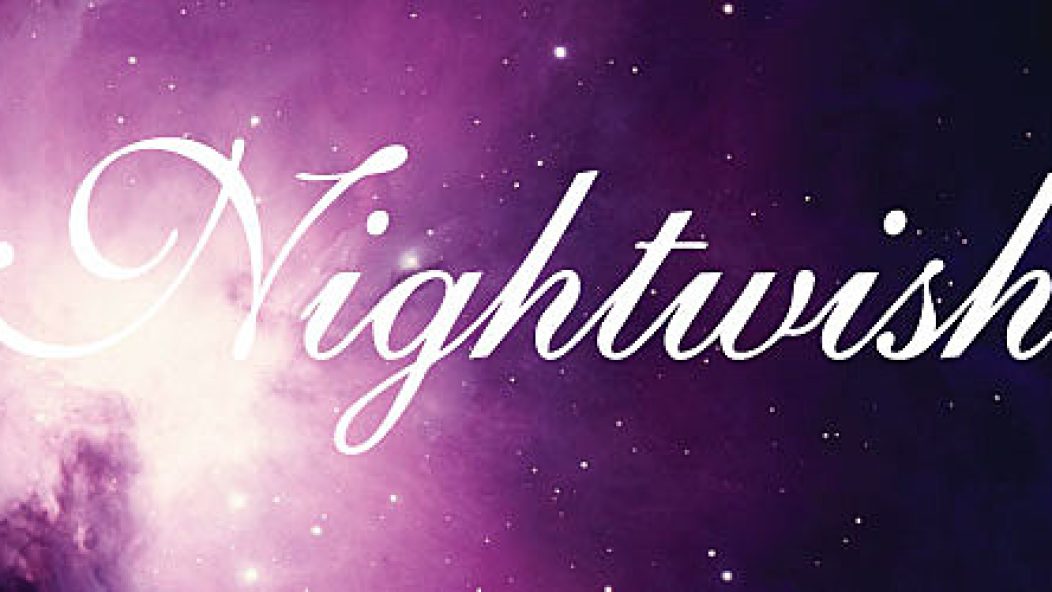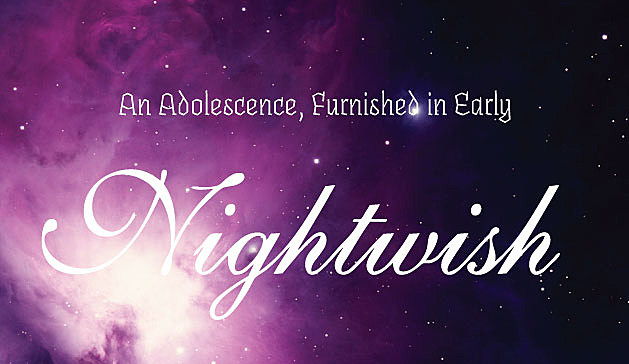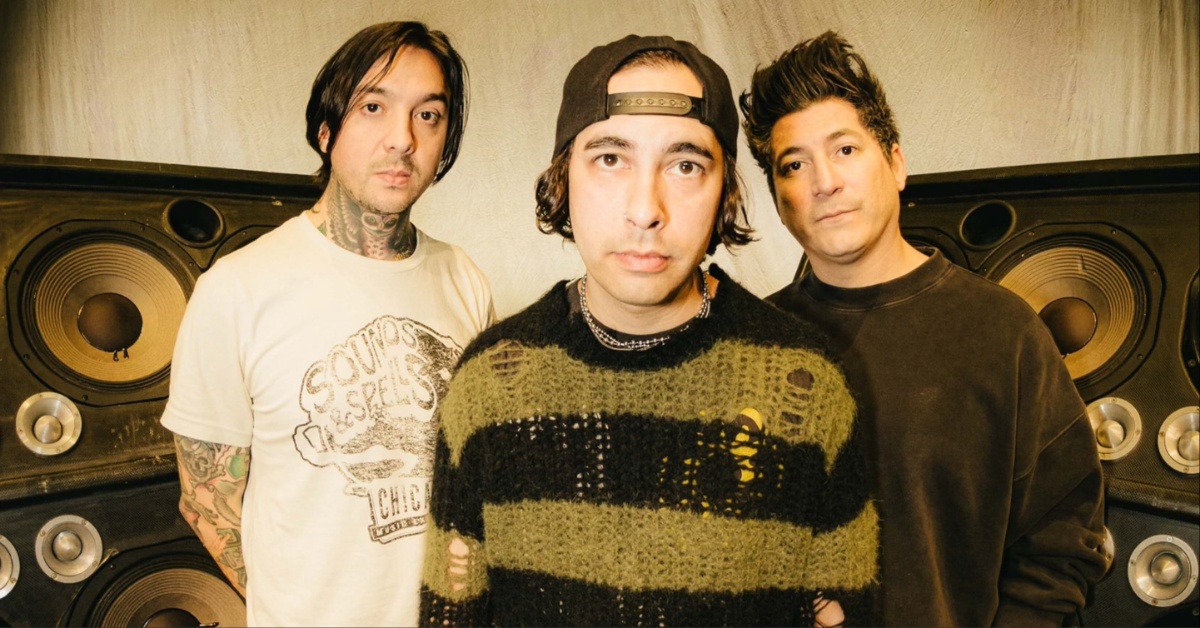
An Adolescence, Furnished in Early Nightwish
“Of course, Neverlands vary a good deal”
–J. M. Barrie as quoted by Alan Moore in Lost Girls.
Recently, Arthur Von Nagel, via Facebook, linked me to an article on the Metal Pigeon blog about top 10 lists and, among other things, power metal. It’s a flawed read, but a critical one. Pigeon takes the blogosphere to task for ignoring genres which receive less critical attention: classic metal and power metal. My associate Mr. Street-Jammer has also returned the importance of power metal to my attention. Though the genre rarely grabs me the way contemporary black metal does, the blog did stir a confession in me, which I must divulge to you all.
Nightwish made a metalhead out of me.
Sure, I owned most of Metallica’s back catalog at that point in time (circa 2003), but I also had a vested interest in Dance Dance Revolution soundtracks. Listing Master of Puppets as one’s favorite album does not signify a dedication or passion for the artform of metal—loving Metropolis doesn’t make one a film buff. Tarja Turunen and company caused me to chose this particular lifestyle and kindled an interest in more traditional metal and prog bands. My infatuation with Tuomas Holopainen’s playing led me to discover Rick Wakeman’s solo work; I also know for a fact I googled “Iron Maiden” after seeing shirts with their logo at a Nightwish concert.
Nightwish’s stop at the Cleveland House of Blues on their first-and-only US tour with Tarja as lead singer was my first large-scale concert of any sort. I remember the long car ride being my first exposure to Dream Theater (pretty cool at the time) and that we spent the day at the Rock and Roll Hall of Fame (pretty lame, still). I remember standing front-row center while holding hands with my then-girlfriend.
Originally, this article was meant to be a review of their new album, Imaginaerum. After a single listen that task became impossible. The album puts me in an odd state of mind-one which I find uncomfortable. Perhaps as a result, I’ve been possessed by an urge to revisit their older records rather than dwell too much on Imaginaerum itself.
An uncanny quality permeates Imaginaerum: an acute disconnect between performer and work stemming from the album’s central conceit of exploring Neverlands, Wonderlands, and other such narrative dream worlds. The subject matter, particularly in “Storytime”, feels pedophilic when I juxtapose it against the image of shirtless and muscled Jukka Nevalinen banging skins during a live performance of the song, and lends Tuomas’ ubiquitous top-hat a sinister nature in my mind’s eye. Of course the subjects of Neverlands and dream worlds are staples of classic literature, but literary critics also often assert that Lewis Carroll and J.M. Barrie were, arguably, pedophiles.
. . .
Nightwish – “Storytime”
. . .
The irony of such an album spawning from a band I loved in my formative years is not lost on me. It’s difficult to believe that the members of Nightwish didn’t foresee this predicament: sexuality has been instrumental to their success. Tarja acquired a sexual totem status in my adolescence just as Christina Scabbia has for many of my peers and just as, I imagine, musicians like Doro Pesch and Joan Jett did for my forebears. Comparatively, new singer Annette Olzon feels like the Barbie to Turenen’s Marilyn Monroe—fetishized, but not sexualized. Her sexless bubblegum history of covering ABBA, and the more staccato pure-toned voice that accompanies it, only affirms this.
The Neverland subject matter yielded similarly strange fruit for two other contemporary artists, both in other fields—Alan Moore and Steven Spielberg. But Hook and Lost Girls gleefully filled the material with real (often homoerotic) sexual tension—they were works for adults. However, with the notable exception of “Slow Love, Slow”, Imaginaerum directs itself to young listeners more than any other Nightwish release. Perhaps I’m just too old, but that friction bugs the hell out of me.
That real discomfort becomes comic and then quite suddenly pitiful during the colossal misfire that is “Scaretale”—the weakest song in the band’s catalog (perhaps the power metal song I’ve enjoyed least in my lifetime).
. . .
Nightwish – “Scaretale”
. . .
“Slow Love, Slow”, however fires on all cylinders—and it’s the most understated song on the album. Re-imagining Nightwish as a sexy jazz band lets them settle into a great meandering structure that teases rather than follows the ‘arena rock’ song structure that overstayed its welcome on 2004’s Once and 2007’s Dark Passion Play. That said, the creep factor covering Imaginaerum doesn’t leave “Slow Love, Slow” completely untouched.
. . .
Nightwish – “Slow Love, Slow”
. . .
If “Slow Love, Slow” is any indication, Tuomas and company may remember that ‘understated’ and ‘sexy’—both adjectives that seldom describe good metal—were two of the things Nightwish did best (see: the quiet guitar sections on 1997’s Angels Fall First, as well as songs like “Walking in Air”). Nightwish has mostly abandoned such things since around the time I dove into their music and that decision worked out alright; they’ve successfully survived a lead singer swap, sell out arenas, and make metal music with expensive production values the likes of which may never be made again. Imaginaerum shows every year that’s gone into its creation and every dollar of its production value: the arrangements are richly layered, and the sound is so diamond-plated that I feel bourgeois just for listening to it. For that reason, it feels wrong to speak ill of Imaginaerum or its predecessor—who makes an endangered species the butt of a joke?
But after a few listens, my imagination remains unkindled. My desire to revisit the keyboard-worshipping prog metal of Oceanborn and the quirky folk-opera of Angels Fall First, however, is burning stronger than before.
. . .












